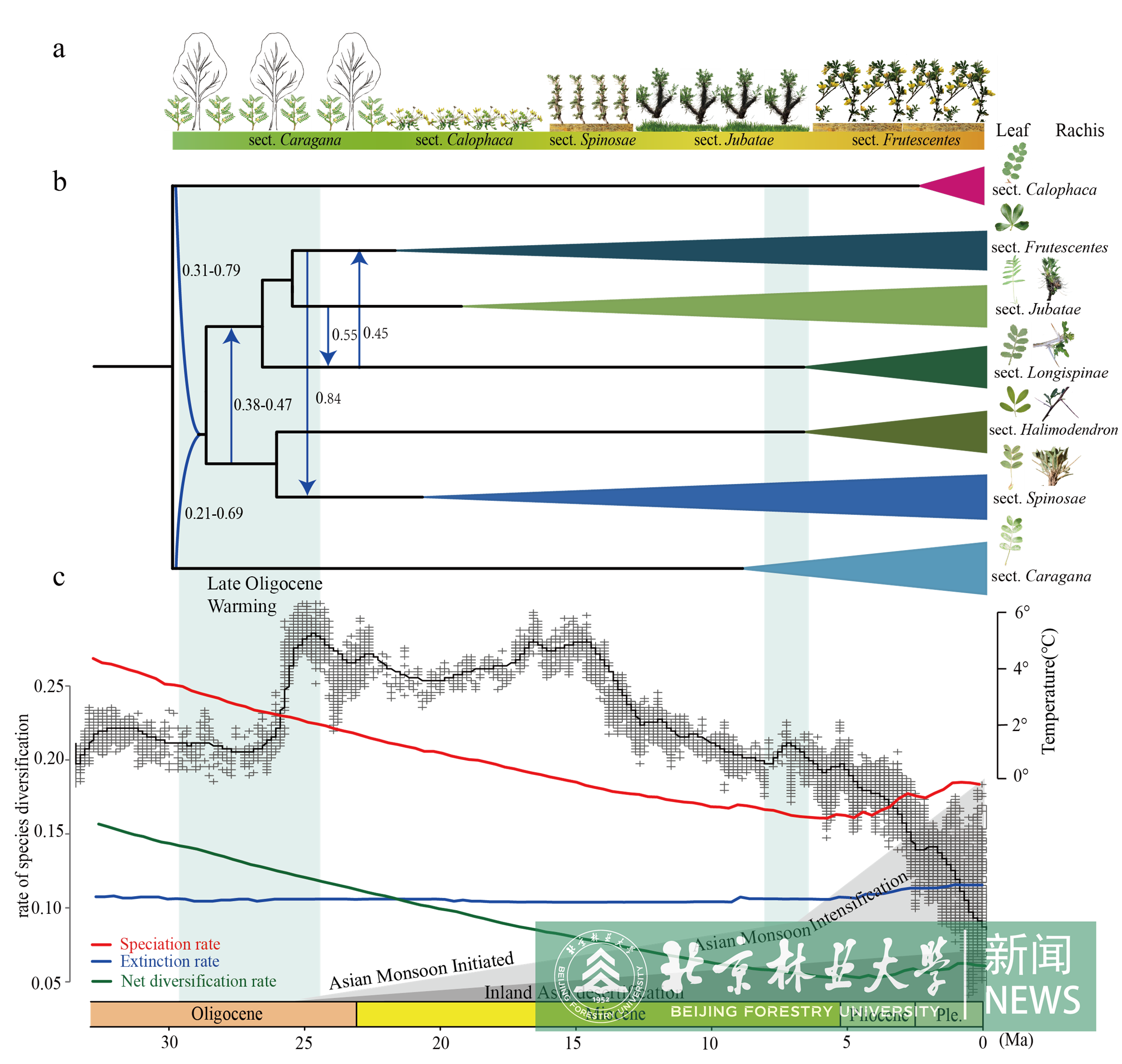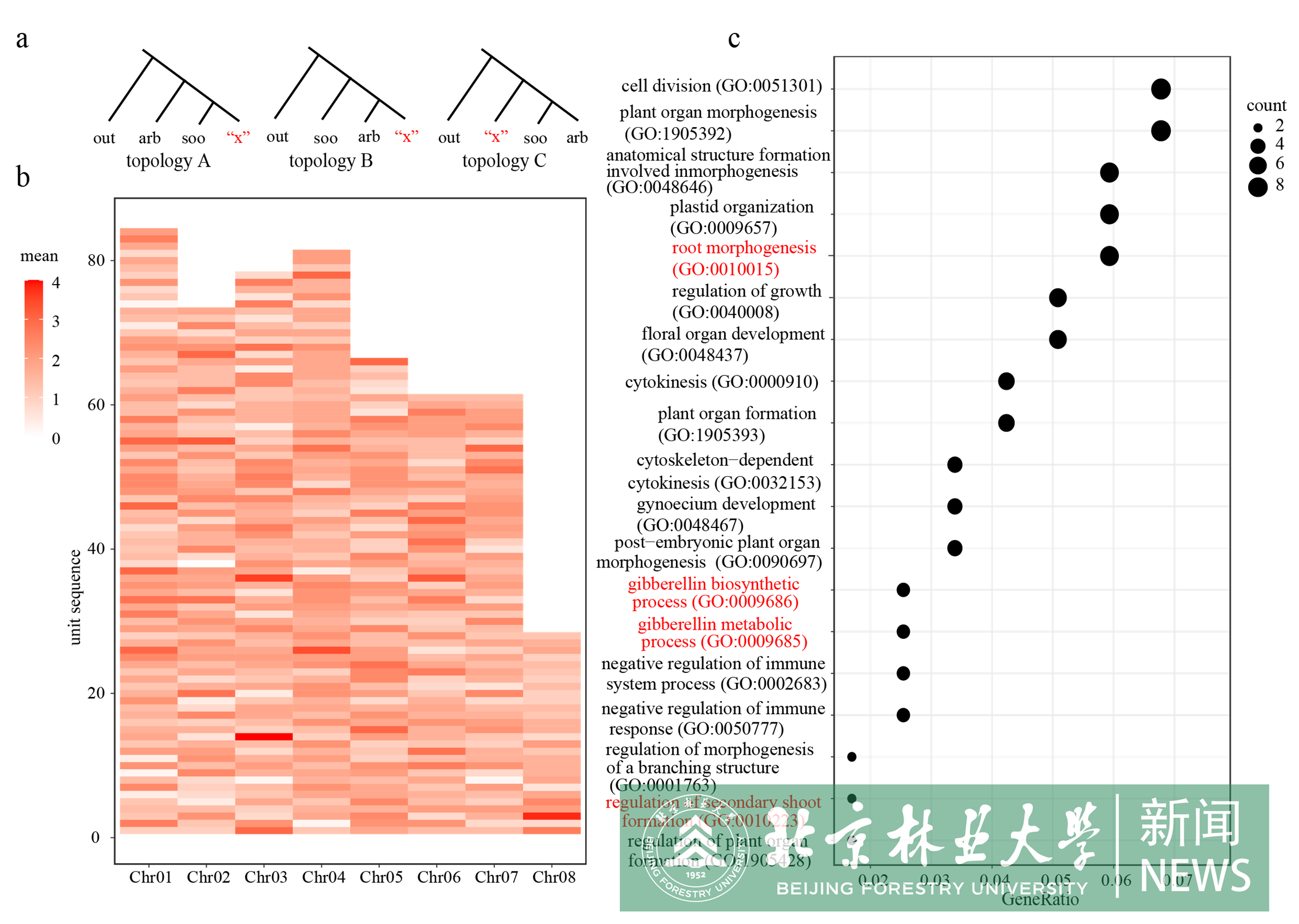Latest news
A research team led by Professors Dong Wenpan and Zhang Zhixiang from the College of Ecology and Nature Conservation has made significant progress in understanding the evolutionary mechanisms of drought adaptation in the Caragana arborescens. Their study, entitled "Ancient hybridization drives arid adaptation and species diversification in Caragana (Fabaceae)", has been published in the internationally renowned botanical journal New Phytologist (IF=10.3).

The genus Caragana (Fabaceae), comprising predominantly xerophytic shrubs, is ecologically important in arid ecosystems across Asia and Eastern Europe. Hybridization is increasingly recognized as a critical evolutionary mechanism, yet its role in arid adaptation and lineage diversification remains underexplored. Here, we test the hypothesis that ancient hybridization-facilitated ecological expansion and diversification in Caragana.
The research team generated a chromosome-level genome assembly for Caragana arborescens and conducted genome-wide resequencing of 98 individuals across 73 species, representing the full taxonomic breadth of the genus. Phylogenomic reconstructions and reticulation analyses (QuIBL, HyDe, PhyloNet, and TreeMix) uncovered pervasive ancient hybridization, particularly between sections Caragana and Calophaca, which gave rise to five descendant lineages. These hybridization events coincided with late Oligocene aridification and were temporally associated with sharp increases in diversification rates.
Introgressed genomic regions were significantly enriched for genes involved in drought tolerance, including those regulating root development, osmoregulation, and hormone signaling. Key gene families, such as late embryogenesis abundant (LEA), sulfate transporters (SULTR), NAM-ATAF-CUC (NAC), and nitrate transporter 1 / peptide transporter family (NPF), exhibited duplications and evolutionary rate shifts in hybrid lineages. Furthermore, Aridity Index data confirmed that hybrid lineages occupy more arid habitats than either parent, highlighting a link between introgression and ecological breadth.

The findings demonstrate that ancient hybridization served as a catalyst for adaptive innovation and diversification in Caragana, offering a genomic mechanism for rapid radiation in response to climatic aridification. This study underscores the evolutionary significance of hybridization in enabling plant lineages to colonize and thrive in extreme environments.
Dr. Cui Xingyong (now a postdoctoral researcher at the South China Botanical Garden, Chinese Academy of Sciences), a recent PhD graduate from Beijing Forestry University, is the first author of the paper. Associate Professor Dong Wenpan and Professor Zhang Zhixiang are the corresponding authors. Co-authors include PhD student Li Enze and Dr. He Jian from Beijing Forestry University, Associate Professor Shang Ce, Dr. Wang Yachao from Fudan University, Professor Zhong Bojian from Nanjing Normal University, and Dr. Juan Viruel from the Royal Botanic Gardens, Kew, UK.
Financial support was provided by the Science and Technology Basic Resources Investigation Program of China (no.: 2021FY100200) and the National Key Research and Development Program (no.: 2019YFF0303202).
Paper link: https://nph.onlinelibrary.wiley.com/doi/10.1111/nph.70360
Written by Li Cui Xingyong, Dong Wenpan
Translated and edited by Song He
Reviewed by Yu Yangyang












